
.
Multimedia Essay By: David Johanson Vasquez © All Rights – Second Addition – Series: 1 & 2
. — Inventions are rarely the result of one individual’s work, but are created from collective efforts over time, from several individual’s observations, theories and experiments. Benjamin Franklin’s role in demystifying electricity, Michael Faraday’s discovery of “induced” current, Nikola Tesla and Guglielmo Marconi’s wireless radio communication… are just a few of the technology pioneers responsible for developing modern telecommunications. I regret not having the resources for this program’s inclusion of all men and women, whose discoveries made telecommunication and information technology possible.
Definition of technology — “the systematic application of scientific or other organized knowledge to practical tasks.” (J.K Galbraith) “the application of scientific and other organized knowledge to practical tasks by… ordered systems that involve people and machines.” (John Naughton) For an alternative graphic format on this essay: www.ScienceTechTablet.wordpress.com  Telecommunications took its first infant steps as the industrial revolution was rapidly compressing concepts of time and space. The first half of the 19THThe century witnessed modern society’s reliance on new innovations — steam locomotive trains for mass transit and electronic communication through telegraph technology. Steamships shrunk the world by delivering capital goods, raw resources and people to remote locations within fractions of the time it took before. With the industrial revolution nearing its peak at the close of the century, a new communication, innovation was developed, which helped transform the modern age into a postmodern era.
Telecommunications took its first infant steps as the industrial revolution was rapidly compressing concepts of time and space. The first half of the 19THThe century witnessed modern society’s reliance on new innovations — steam locomotive trains for mass transit and electronic communication through telegraph technology. Steamships shrunk the world by delivering capital goods, raw resources and people to remote locations within fractions of the time it took before. With the industrial revolution nearing its peak at the close of the century, a new communication, innovation was developed, which helped transform the modern age into a postmodern era.
Inventor, Alexander Graham Bell’s Washington D.C. company, which developed the telephone, eventually evolved into a prime research laboratory. Bell’s vision for a R & D lab, created a foundation for the digital technologies of today. In the following century, another key, R & D technology titan— Xerox PARC enters the stage, which helps to set in motion personal computing and expands the information technology revolution.

The steamship S.S. Empress of India near Vancouver B.C.
From the private collection of: David A. Johanson ©
.  Scottish born Alexander Graham Bell From the collection of: Library of Congress
Scottish born Alexander Graham Bell From the collection of: Library of Congress
The French Technology Connection
A French, visionary government in 1880, recognized the importance of  Alexander Bell’s invention, and awarded him the Volta Prize. A sum of 50,000 francs or roughly, $ 250,000 in today’s currency came with the honor. The funds were reinvested into Bell’s laboratory for use in analysis, recording and transmission of sound. Growing proceeds from the lab were used for additional research and in education to enable knowledge on deafness.
Alexander Bell’s invention, and awarded him the Volta Prize. A sum of 50,000 francs or roughly, $ 250,000 in today’s currency came with the honor. The funds were reinvested into Bell’s laboratory for use in analysis, recording and transmission of sound. Growing proceeds from the lab were used for additional research and in education to enable knowledge on deafness.
Can You Hear Me Now 
 The telegraph and telephone were the first forms of electrical, point-to-point telecommunications and qualify as early versions of social-media platforms. Over time, phone service, convenience and quality have steadily improved. In my youth during the early 1960s, I spent summers visiting relatives with farms in Wisconsin who had phones connected on “party lines” (several phone subscribers on one circuit). When picking up a phone connected with a party line, your neighbor might be having a conversation in progress. If a conversation was taking place you could politely interrupt and request to use the phone for urgent business. Today, phone service has become so advanced that it is taken for granted as a form of personal utility.
The telegraph and telephone were the first forms of electrical, point-to-point telecommunications and qualify as early versions of social-media platforms. Over time, phone service, convenience and quality have steadily improved. In my youth during the early 1960s, I spent summers visiting relatives with farms in Wisconsin who had phones connected on “party lines” (several phone subscribers on one circuit). When picking up a phone connected with a party line, your neighbor might be having a conversation in progress. If a conversation was taking place you could politely interrupt and request to use the phone for urgent business. Today, phone service has become so advanced that it is taken for granted as a form of personal utility.  In 1925, Bell Telephone Laboratories were created from a merger with the engineering department of American Telephone & Telegraph (AT&T) and Western Electric Research Laboratories. Ownership of the lab was shared evenly between the two companies; in return, Bell Laboratories provided design and technical support for Western Electric’s telephone infrastructure used by the Bell System. Bell Labs completed the symbiotic relationship for the phone companies by writing and maintaining a full-spectrum of technical manuals known as Bell System Practices (BSP).
In 1925, Bell Telephone Laboratories were created from a merger with the engineering department of American Telephone & Telegraph (AT&T) and Western Electric Research Laboratories. Ownership of the lab was shared evenly between the two companies; in return, Bell Laboratories provided design and technical support for Western Electric’s telephone infrastructure used by the Bell System. Bell Labs completed the symbiotic relationship for the phone companies by writing and maintaining a full-spectrum of technical manuals known as Bell System Practices (BSP). 
An Invisible Bridge From Point A To Point B
Bell Laboratories instantly began developing and demonstrating for the first time, telecommunication technology, which we now depend on for economic growth and to hold our social fabric together. Bell accomplished the first transmitting of a long-distance, 128-line television images from New York to Washington, D.C. in 1927. This remarkable event ushered in television broadcast, creating a new form of mass-multimedia. Now people could gather together in the comfort of their homes and witness… live news reports, hours of entertainment and product advertisements, which helped to stimulate consumer spending in a growing economy.  Radio astronomy’s powerful space exploratory telescope, was developed through research conducted by Karl Jansky in 1931. During this decade, Bell lab’s George Paget Thomson was awarded the Nobel Prize in physics for his discovery of electron diffraction, which was a key factor for solid-state.
Radio astronomy’s powerful space exploratory telescope, was developed through research conducted by Karl Jansky in 1931. During this decade, Bell lab’s George Paget Thomson was awarded the Nobel Prize in physics for his discovery of electron diffraction, which was a key factor for solid-state.
The Forecasting Power of Numerical Data
An important component of renewable energy is the photovoltaic cell, which was developed in the lab during the 1940s by Russell Ohl. A majority of the United States’ statistician superstars, such as W. Edwards Deming, Harold F. Dodge, George Edwards, Paul Olmstead and Mary N.Torrey all came from Bell Labs Quality Assurance Department. W. Edwards Deming’s genius would later go on to help revitalize Japan’s industry and be used in Ford Motors’ successful, quality control initiatives in the 1980s.

- W. Edwards Deming
The U.S. government used Bell Labs for a series of consulting projects relating to highly technical initiatives and for the Apollo program. Several Nobel Prizes have been awarded to researchers at the laboratory, adding to its fame and growing prestige. In the 1940s many of the Bell Labs were moved from New York City to nearby areas of New Jersey.  …………………………………. Replica of the first transistor.
…………………………………. Replica of the first transistor.
Smaller Is Better In The World Of Electronics
 Inventors of the transistor, l. to r. Dr. William Shockley, Dr. John Bardeen, Dr. Walter Brattain, ca. 1956 Courtesy Bell Laboratories Perhaps Bell Laboratories most marvelous invention was the transistor invented on December 16, 1947. Transistors are at the heart of just about all electrical devices you’ll use today. These crucial artifacts transformed the electronics industry, by miniaturizing multiple electronic components used in an ever-expanding array of products and technical applications. Transistor efficiencies also greatly reduced the amount of heat in electronic devices, while improving overall reliability and efficiency compared to fragile vacuum tube components. Once more, the lab’s select team of scientist was rewarded with the Nobel Prize in Physics, for essential components of telecommunications.
Inventors of the transistor, l. to r. Dr. William Shockley, Dr. John Bardeen, Dr. Walter Brattain, ca. 1956 Courtesy Bell Laboratories Perhaps Bell Laboratories most marvelous invention was the transistor invented on December 16, 1947. Transistors are at the heart of just about all electrical devices you’ll use today. These crucial artifacts transformed the electronics industry, by miniaturizing multiple electronic components used in an ever-expanding array of products and technical applications. Transistor efficiencies also greatly reduced the amount of heat in electronic devices, while improving overall reliability and efficiency compared to fragile vacuum tube components. Once more, the lab’s select team of scientist was rewarded with the Nobel Prize in Physics, for essential components of telecommunications. 
The mobile-phone was also created in 1947, with the lab’s commercial launch of Mobile Telephone Service (MTS) for use in automobiles. Some 20 years later, cell phone technology was developed at Bell Labs and went on to become the ubiquitous form of communication it is today. In 1954 the lab began to harness the sun’s potential, by creating the world’s first modern solar cell. The laser (Light Amplification by Stimulated Emission of Radiation) was dated in a Bell Lab, 1958 publication. The laser’s growing spectrum of applications includes — communications, medical and consumer electronics. 
A Perpetual Revolution In The Sky Unites The World
In 1962, Bell Labs pioneered satellite communications with the launch of Telstar 1, the first orbiting communication satellite. Telstar enabled virtually instant telephone calls to be bounced from coast to coast and throughout the world. This development unified global communications and provided instant 24-hour news coverage. 

Bell Labs introduced the replacement of rotary dialing with touch-tone in 1963, this improvement vastly expanded telephone services with— 911 emergency response, voice mail and call service capabilities.

Image used in Byte Magazine for an article on VM2 assembly language. Photo-illustration by: David A. Johanson © All Rights
A New Distinct Language For Harnessing Machines
It’s been greatly underreported that Unix operating system, C and C++ programing languages, essential for use in Information Technology (IT), were all created in Bell Labs. These crucial computer developments were established between 1969 and 1972, while C++ came later in the early 1980s. C programing was a breakthrough as a streamlined and flexible form of computer coding, making it one of the most widely used in today’s programing languages. Unix enabled comprehensive networking of diverse computing systems, providing for the internet’s dynamic foundation. Increasingly, Bell Laboratories inventions for the next two decades expanded micro-computing frontiers, which helped to establish personal computing.
 In 1980, Bell Labs tested the first single-chip 32-bit microprocessor, enabling personal computers to handle complex multimedia applications.
In 1980, Bell Labs tested the first single-chip 32-bit microprocessor, enabling personal computers to handle complex multimedia applications.
A major corporate restructure of AT&T, the parent company of Bell Laboratories, was ordered by the U.S. Federal government in 1985, to split-up its subsidiaries as part of a divestiture agreement. This event proved to be an example of overregulation, which severed important links for funding technology R&D projects. Although AT&T previously had an economic advantage with a monopoly in the telephone industry, it allowed for necessary funding of Bell R&D labs. Indirectly, U.S. taxpayers made one of the best investments by subsidizing the foundation for our current telecommunication and information technology infrastructure. AT&T Bell Laboratories became AT&T Labs official new name in 1996, when it became part of Lucent Technologies. Since 1996, AT&T Labs has been awarded over 2000 patens and has introduced hundreds of new products. In 2007, Lucent Bell and Alcatel Research merged into one organization under the name Bell Laboratories. Currently, the Labs’ purpose is directed away from science discovery and focussed on enhancing existing technology, which will yield higher financial returns.
Pause & Reflect: Questions for continuous learning part 1.
1.) What were the first forms of electrical, point-to-point telecommunications? 2.) What revolution was taking place when early forms of telecommunications were invented and name at least two technology innovations? 3.) Define the word technology? 5.) Who founded Bell Research and Development Labs? 7.) Name at least two developments which Bell Labs were awarded Nobel Prizes in? 6.) Pick one Bell Lab invention, which you believe was most important for helping develop modern telecommunications or personal computing.
Any Sufficiently Advanced Technology Will Appear As Magic.
— Arthur C. Clarke

Advance Technology Takes Root In The West
In the first half of the 20TH Century, Bell Labs’ dazzling R&D creations aligned seamlessly to establish a solid foundation in telecommunications. Most of the Labs’ bold research had been conducted in the industrialized, Eastern portion of the United States. By the 1950s, new evolving industries on the West Coast were benefiting from Bell’s technological developments. Palo Alto’s, Stanford University research facilities, south of San Francisco, attracted corporate transplants— most notably IBM, General Electric and Eastman Kodak. In 1970, XEROX Corporation of Rochester, New York established a research center known as—Xerox PARC (Palo Alto Research Center Incorporated). PARC’s impact in R&D would soon be felt, acting as a stimulating catalyst for personal computing and information technology development.
Creative Sanctuary For Nurturing Daring Ideas
 Jack Goldman, Chief Scientist at Xerox enlisted physicist Dr. George Pake, a specialist in nuclear magnetic resonance to help establish a new Xerox research center. Selecting the Palo Alto location gave the scientist greater freedom than was possible near its Rochester headquarters. The location also provided huge resource opportunities to select talent pools of engineers and scientist from the numerous research centers located in the Bay Area. Once the West-Coast lab had a foothold, it became a sanctuary for the company’s creative misfits— passionate science engineers who were determined to create boldly. One of the few downsides for the new facility’s location was—less opportunities for lobbying and promoting critical breakthrough developments to top management located a continent away. XEROX PARC had an inspiring creative influence, along with universal appeal, which attracted international visitors. A collaborative, open atmosphere helps to define the creative legacy of PARC. The cross-pollination of ideas and published research between the R&D facility and Stanford’s computer science community, pushed digital innovation towards new thresholds.
Jack Goldman, Chief Scientist at Xerox enlisted physicist Dr. George Pake, a specialist in nuclear magnetic resonance to help establish a new Xerox research center. Selecting the Palo Alto location gave the scientist greater freedom than was possible near its Rochester headquarters. The location also provided huge resource opportunities to select talent pools of engineers and scientist from the numerous research centers located in the Bay Area. Once the West-Coast lab had a foothold, it became a sanctuary for the company’s creative misfits— passionate science engineers who were determined to create boldly. One of the few downsides for the new facility’s location was—less opportunities for lobbying and promoting critical breakthrough developments to top management located a continent away. XEROX PARC had an inspiring creative influence, along with universal appeal, which attracted international visitors. A collaborative, open atmosphere helps to define the creative legacy of PARC. The cross-pollination of ideas and published research between the R&D facility and Stanford’s computer science community, pushed digital innovation towards new thresholds.
A Premier Of Personal Computing Tools Is Unveiled
XEROX PARC, discovered a target rich environment of ideas from Douglas Engelbart, who worked at Stanford Research Institute (SRI) in Menlo Park. Engelbart gave the Mother of all personal computing presentations in December of 1968, — astonishing the computer science audience with a remarkable debut of: the computer mouse, hypertext, email, video conferencing and much more. Bitmap graphic, graphical user interface (GUI), which provides window features and icons— are just a few of the revolutionary concepts developed by PARC for personal computing. The list of PC innovations and developments continues with laser printers, WYSIWYG text editor, InterPress (prototype of Postscript) and Ethernet as a local-area computer network—inspiring PARC Universal Packet architecture, which resembles today’s internet. Optical disc technologies and LCD, were developed by PARC material scientist adding yet more to its diverse technology portfolio. 
The Shape Of Things To Come
Xerox PARC’s R&D, efficiently blended these vital new technologies and leveraged it all into a personal computer, workstation, called “Alto.” The futuristic Alto, was light-years ahead of its 1973 debut—bundled with a dynamic utility including: a mouse, graphical user interface and the connectivity of Ethernet. Interest in this revolutionary PC wonder kept expanding as countless demonstrations were given to the legions of intrigued individuals. The increasing demand for witnessing the power of PC computing was telegraphing the need for a new consumer market. For the first time, a “desktop sized computer”could match the capabilities of a full-service print shop. Advance technology always comes with a hefty price tag, and the Alto was no exception, making it beyond reach of most consumers. Despite a high price-point — excitement, fame and glory of Alto grew — as did admiration for the bold new world of Apple Computers and of its superstar founder — Steve Jobs.


- Xerox Alto -1973 Was this the apple of Steve Job’s eye? It certainly was the first personal computer, which included most of the graphic interface features we recognize today.
Torch Of The Titans Lights New Horizons
By 1979, Apple was beginning to advance its own flavor of user-friendly interfaces with the development of the Lisa and Macintosh personal computers. Both products featured screens with multiple fonts, using bitmap screens for blending graphics and text. From early on, there were Apple graphic engineers associated with Xerox PARC — either through former employment or in connection with Stanford University. Apple engineers aware of advances made in graphic interfaces with PARC’s ALTO, prompted Steve Jobs to have a parlay with PARC. In late 1979, Steve Jobs with his Apple engineering entourage arrived to view an AlTO demonstration at Xerox facilities. The meeting’s outcome proved Jobs’ was a master of showmanship and marketing JudeJitsu by not disclosing a previously negotiated, sizable investment from Xerox’s venture capital group.
Gravitational forces began shifting in favor of Steve Jobs and Apple Computer to capitalize on the market potential for personal computing. PARC computer engineers and scientist clearly understood the economic potential of an information business they help to build… but top Xerox executives certainly did not. Xerox had a history of dominating the lucrative copy machine market — this was the business model Xerox corporate decision makers were comfortable with and they would not risk venturing very far from.
Most of PARC’s personal computing developments experienced the same frustrating fate of being cherry picked by others — allowing for lucrative opportunities to go for bargain rates to new companies like Apple Computers. Apple’s alchemy of — perfect timing, creative talent and visionary insight quickly aligned towards harnessing information technology products for an emerging market convergence. The creative inspiration and marketing savvy, which Steve Jobs’ applied towards personal computing—created seismic ripple effects, which we’re still experiencing today.
.
Nothing Ventured, Nothing Gained

Recently, there’s been a handful of media and tech industry critics, siting undeserved shortcomings of Bell Labs and Xerox PARC. Too often, corporate R&D labs are faulted for not fully marketing their technology developments or capitalizing on scientific inventions. Rarely mentioned in these over-simplistic reviews, is an understanding an R&D’s purpose or mission of innovation, which is directed by the parent company’s strategic goals. Failing to understand the reality of this relationship, detracts from the technological importance and diminishes the accomplishments of these remarkable engineers and scientists. Lost in the critics hindsight is an under-reporting of the titanic obstacles facing the marketing, manufacturing and distribution of innovative products.
.
Thrilling technical breakthroughs are what grab headlines — rarely are the successful efforts of corporate marketing or brilliant production logistics recognized or mentioned. It’s a disconnect to judge a R&D’ lab’s success completely on the financial returns of its inventions.
The laser printer in particular, removes the myth that Xerox PARC mismanaged all of its developments. Gary Starkweather, a brilliant optical engineer for Xerox PARC, developed the laser printer. Starkweather had pitched battles with Xerox management over promoting the laser printer, but eventually he triumphed and the laser printer went on to earn billions of dollars — enough to repay the investment cost of Xerox PARC several times over. Eventually Starkweather moved on to greater opportunities when Steve Jobs offered him a job in Cupertino.
Brilliant R&D technology, requires an equally creative or open-minded group of executives for converting technology innovation into a marketable product. These decision makers must maintain iron-wills and courage to shepherd the technology product through its entire volatile development process.
IBM’s iconic 305 RAMAC, the first commercial ‘super computer,’ is a classic example of a product development challenge. Introduced in 1956, the RAMAC featured a hard disk drive (HDD) and stored a — whopping five megabytes of data. Apparently, the HDD storage capacity could’ve been expanded well beyond the 5MB, but was not attempted because — IBM’s marketing department didn’t believe they could sell a computer with more storage.

- IBM 305 RAMAC — first commercial computer to use a hard disk drive in 1956.
R&D Labs take creative risk in developing new ideas, most of these developments won’t make it to market, but that’s the price of creativity. Using intuition for taking risks and knowing some failure is necessary to pave the road toward successful discoveries — builds confidence in trusting one’s creative resources. So often, the creative-process is misunderstood and undervalued in our society’s perceived need for instant control and results. In the past, I’ve personally witnessed this attitude reflected in our educational system, however the viewpoint is progressively shifting to realize the value of the creative-process. Steve Jobs and Apple Computers are a good illustration of a company, which traditionally emphasized and embraced the creative spirit. Creative employees are considered the most valued resource at Apple as they are encouraged to nurture their creative uniqueness. Shortsighted emphasis on quarterly results, which has affected most of American business culture, is refreshingly absent from Apple’s overall mindset, allowing for more sustained and successful business initiatives.
Where Have All The R&D Labs Gone — Innovation Versus Invention
The era of industrial, ‘closed inventive’ research & development labs — have faded into the background of yesterday’s business culture. Internal silos, once the proprietary norm, have been day-lighted to allow fresh ideas and collaborative efforts to circulate.
For the past 10 years, corporations have steadily reversed their long-term, pure scientific research in favor of efforts towards quicker commercial returns. In 2011, Intel Corporation, dropped its ’boutique’ research ‘lablets‘ in Seattle, Berkeley and Pittsburgh — opting for academic research to be conducted at university facilities. Intel continues to maintain its more profit oriented Intel Labs. This industry strategy, repeatedly cloned itself within the corporate research world, as it is far easier to realize a profit from innovation than pure invention.
Perhaps the golden-age of great research & development labs have run their course — but not before replacing the analogue, industrial era technology with a digital one. A century ago, using creative, innovative and bold scientific vision, Bell Labs set the standard for future R & D Labs. Xerox PARC, helped to extend Bell Labs’ marvelous inventions and innovations with a solid platform of creative research for developing mass markets in the postmodern telecommunications and personal computing of today. ~
Pause & Reflect: Questions for continuous learning – part 2. 1.) Name the parent company (based in New York) featured in the essay and its research and development lab, which moved into California’s Bay Area? 2.) What was the profitable product (used for duplicating documents), that this company had originally been built on? 3.) Give at least two reasons why this R&D lab was so inventive? 4.) What stopped the lab’s parent company from realizing more profits from its inventions? 5.) What was the name of both the young, iconic tech entrepreneur and his company (named after a red fruit), who was able to creatively package and market early Silicone Valley PC innovations? 6.) What’s the difference between invention and innovation? 7.) In your opinion, who were the top 10 inventors of all time and how did they make your top 10?
.
.
References & Links 
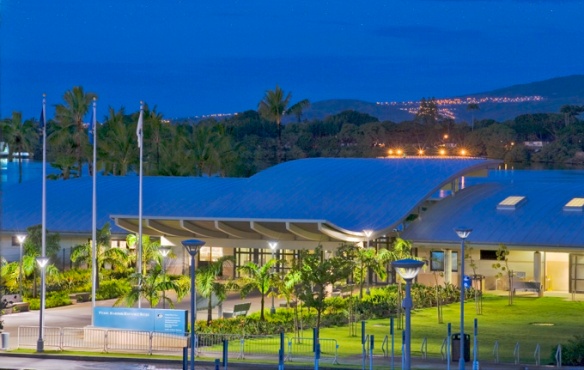

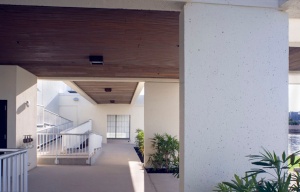




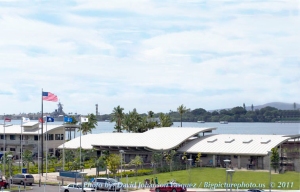
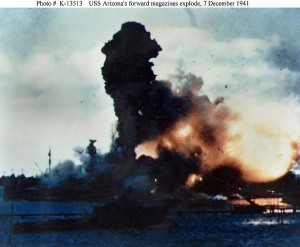









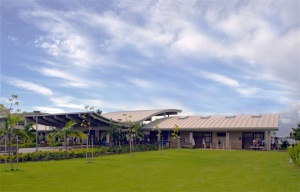



















 Radio astronomy’s powerful space exploratory telescope, was developed through research conducted by Karl Jansky in 1931. During this decade, Bell lab’s George Paget Thomson was awarded the Nobel Prize in physics for his discovery of electron diffraction, which was a key factor for solid-state.
Radio astronomy’s powerful space exploratory telescope, was developed through research conducted by Karl Jansky in 1931. During this decade, Bell lab’s George Paget Thomson was awarded the Nobel Prize in physics for his discovery of electron diffraction, which was a key factor for solid-state.
















